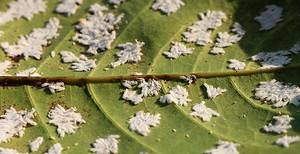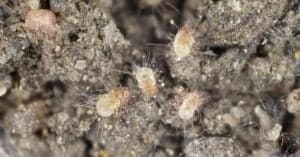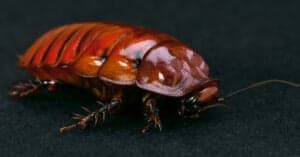Getting bitten by an insect is a pretty common thing, but one of the most annoying things is getting bitten and not knowing what it is that has bitten you – or not even being able to see who the culprit is. The latter is definitely common when it comes to no-see-ums and pirate bugs as both are incredibly small insects that are difficult to spot. So is it even possible to tell them apart? Join us as we discover everything you need to know about the no-see-um vs pirate bug!
Comparing No-See-Um vs Pirate Bug
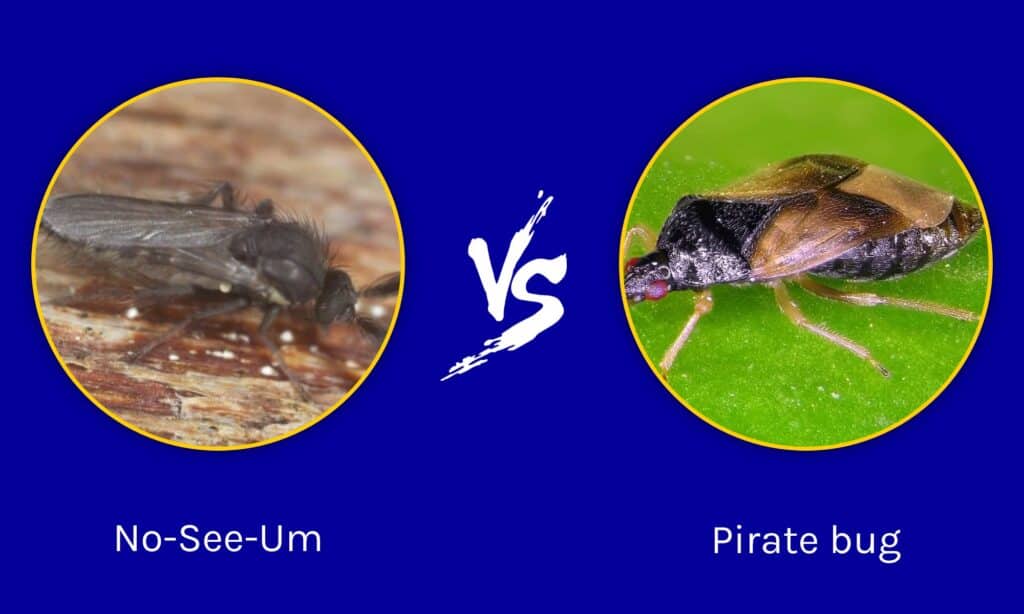
| No-See-Um | Pirate Bug | |
|---|---|---|
| Distribution | Worldwide except Antarctica and the Arctic | Most countries with a suitable habitat |
| Habitat | All over but favor habitats around standing and slow-moving water | Agricultural fields, cropland, grassland |
| Size | 0.04 – 0.12 inches long | 0.06 – 0.2 inches long |
| Body Shape | Elongated | Flat, elongated oval |
| Color | Larvae – creamy white Adult – grey | Nymph – yellow-orange, or brown Adult – black and white |
| Eggs | Up to 450 per clutch, up to 7 times per year | 2 – 4 eggs per day |
| Life Cycle | 4 stages – egg, larva, pupa, adult | 3 stages – egg, nymph, adult |
| Diet | Larvae – algae, fungi, plant matter Adult – mammal, reptile, or insect blood (females only), flower nectar | Soft-bodied insects, plant matter |
| Predators | Larger insects, birds, carnivorous plants | Spiders, lacewings, other true bugs |
| Lifespan | 2 – 6 weeks | 3 – 4 weeks |
The 5 Key Differences Between No-See-Ums and Pirate Bugs
The key differences between pirate bugs and no-see-ums include appearance, lifespan, size, diet, lifecycle, predators, body shape, and habitat.
No-see-ums – also known as biting midges – are insects that make up Ceratopogonidae family group of which there are more than 5,000 species. However, there are only around 500 to 600 species of pirate bugs worldwide which all make up the Anthocoridae family group. Although no-see-ums come under the Diptera order which are known as flies, pirate bugs are classified in the Hemiptera order which are known as true bugs. This order includes all aphids, planthoppers, leafhoppers, and shield bugs.
No-See-Um vs Pirate Bug: Size
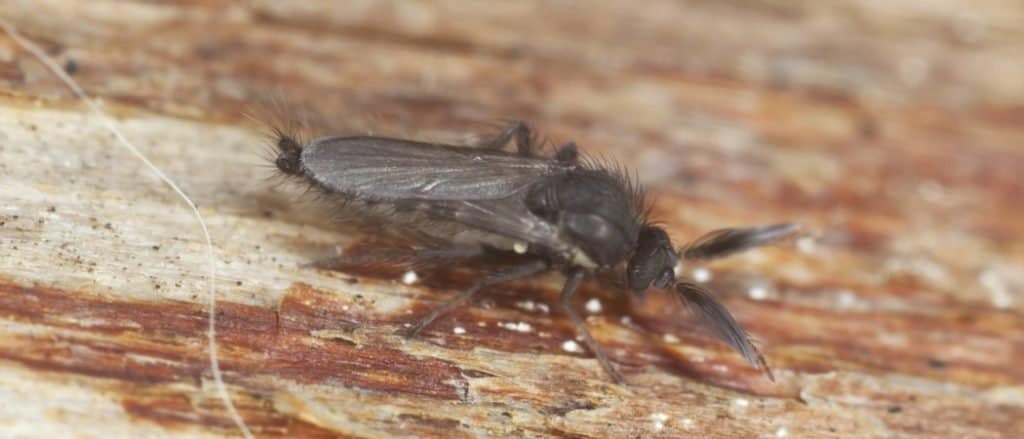
No-see-ums are smaller than pirate bugs and have wings covered with dense hair.
©Henrik Larsson/Shutterstock.com
The first difference between no-see-ums and pirate bugs is their size. Although both are incredibly small and difficult to see, pirate bugs are generally larger than no-see-ums. Pirate bugs are 0.06 to 0.2 inches long, but no-see-ums are a tiny 0.04 to 0.12 inches long.
No-See-Um vs Pirate Bug: Appearance
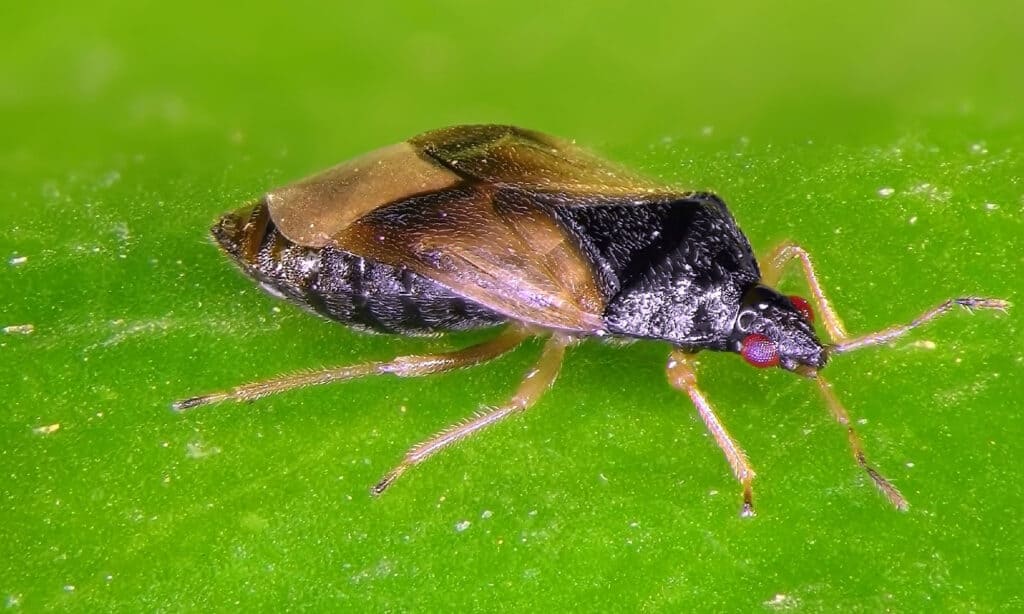
Pirate bugs have longer wings than their bodies.
©Protasov AN/Shutterstock.com
Although both are tiny, pirate bugs and no-see-ums actually look very different. Pirate bugs have a flattened and slightly elongated oval-shaped body. They are usually black but have white markings across their wings and back which creates a distinctive X pattern. Their wings are longer than their bodies and extend beyond the end of their abdomen. Pirate bugs also have antennas that are longer than their head and can be seen from above.
No-see-ums have an elongated body that is grey in color and a set of wings that are covered in thick, dense hair. Quite often, their wings appear as though they have tiny patterns on them.
No-See-Um vs Pirate Bug: Diet
Easily the most important difference between no-see-ums and pirate bugs is their diet and you might be surprised to find that pirate bugs don’t feed on blood at all. That’s right, even though they can give you a pesky bite, they’re not actually feeding on your blood. Instead, pirate bugs feed on many different soft-bodied insects and plant material both as nymphs and as adults.
No-see-um larvae eat algae, fungi, and plant matter while as adults they feed on flower nectar and the blood from mammals, insects, or reptiles. However, it is only the females who feed on blood as they must consume a blood meal before laying their eggs. When no-see-ums bite, they use their very sharp mandibles to make a hole in the skin, then inject saliva into the wound so that the blood pools there. This then makes it easier for them to suck the blood from it.
No-See-Um vs Pirate Bug: Eggs
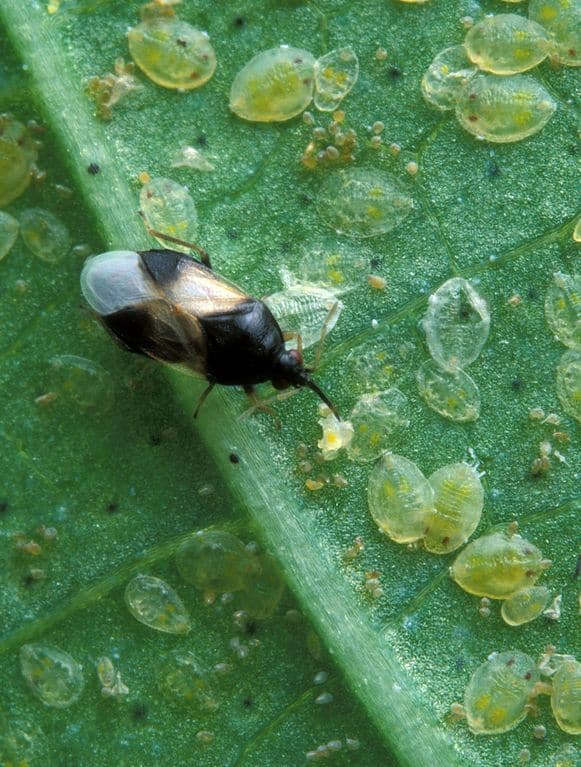
Pirate bugs can lay up to 100 eggs in their lifetime.
©Jack Dykinga / public domain – License
Another difference is how many eggs they lay – with no-see-ums being much more prolific. Female pirate bugs can lay between 2 and 4 eggs per day throughout their adult lives. As they live for 3 to 4 weeks as adults, this means that pirate bugs can lay approximately 100 eggs in their lifetime. Pirate bugs lay their eggs inside the actual tissue of plants – such as inside leaf and flower petioles.
No-see-ums can lay up to an incredible 450 eggs in each clutch- laying up to 7 clutches in their lives. This means that no-see-ums easily reproduce much more than pirate bugs. No-see-ums lay their eggs on virtually any moist surface – such as areas around lakes and ponds, or in muddy sand or soil.
No-See-Um vs Pirate Bug: Life Cycle
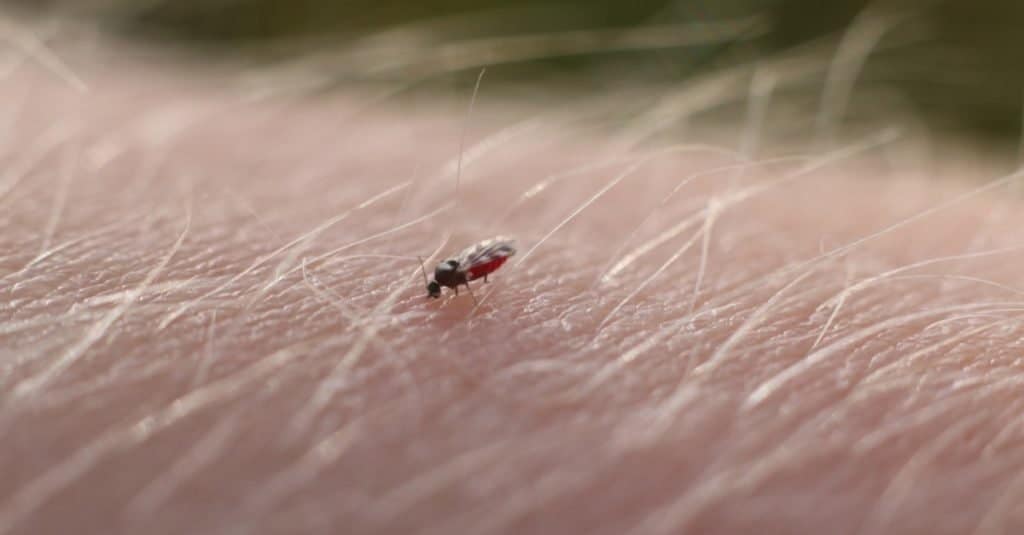
Female no-see-ums must consume a blood meal before laying their eggs.
©Jamierpc/Shutterstock.com
Pirate bugs and no-see-ums also have very different life cycles and go through different stages to reach adulthood. No-see-ums go through four stages – egg, larva, pupa, and adult. The eggs hatch between 2 and 10 days after they have been laid and become larvae which are creamy-white and have a worm-like appearance. Quite often, no-see-um larvae are mistaken as being aquatic, given that the eggs require moisture to hatch. However, they are not strictly aquatic or terrestrial either as they can actually develop both on land and in water. The no-see-um larvae then pupate underwater where they are specially adapted to breathing underwater using a “respiratory horn”. The pupal stage is complete after 2 to 3 days and they become adult no-see-ums.
Pirate bugs only go through three stages in their lives – egg, nymph, and adult. The eggs hatch into nymphs after 4 to 5 days. The young nymphs closely resemble adult pirate bugs but lack wings. To begin with, the nymphs are tear-drop shaped and colorless but then turn yellow, and then eventually brown. As nymphs, they go through five further development stages – known as instars – which take between 15 and 20 days to complete. In the final stage, they develop their wings and become adult pirate bugs.
The photo featured at the top of this post is © Protasov AN/Shutterstock.com
FAQs (Frequently Asked Questions)
What do pirate bug and no-see-um bites look like?
No-see-um bites are generally dark colored, small, and located close together in a cluster. However, the bites from pirate bugs can vary in appearance as not everyone reacts the same way to them. Some people don’t show any signs of the bite at all while for others they turn red. In some cases the bites can even swell up and resemble a mosquito bite.
Why do pirate bug bites hurt so much if they’re not feeding on blood?
Although they are so small, the bite of a pirate bug is incredibly painful – much more than you might expect from their size. Even though they’re not feeding on our blood, when pirate bugs bite they are actually probing our skin with their mouthpart which resembles a short, blunt beak. Unlike no-see-ums, they don’t inject their saliva under the skin. Also, contrary to what many myths state, they don’t urinate in the wound either.
Thank you for reading! Have some feedback for us? Contact the AZ Animals editorial team.



